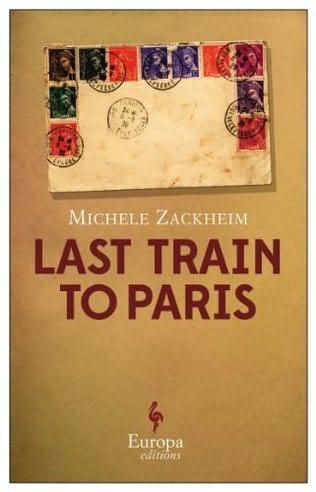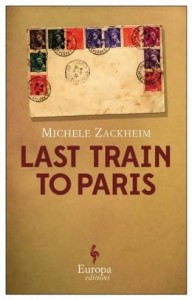
The Courage and Criticism of a War Correspondent
 There is a remarkable visual clarity in Michele Zackheim’s “Last Train to Paris,” set predominantly in Paris and Berlin during the rise and fall of the Third Reich. Perhaps reflecting Zackheim’s background as a visual artist, the novel is as adept at crystallizing small moments as it is at portraying the sweep of action during the darkest time in 20th century Europe. The story is told by Rose (R.B.) Manon, an old woman looking back at her career as a political reporter and war correspondent for The Paris Courier.
There is a remarkable visual clarity in Michele Zackheim’s “Last Train to Paris,” set predominantly in Paris and Berlin during the rise and fall of the Third Reich. Perhaps reflecting Zackheim’s background as a visual artist, the novel is as adept at crystallizing small moments as it is at portraying the sweep of action during the darkest time in 20th century Europe. The story is told by Rose (R.B.) Manon, an old woman looking back at her career as a political reporter and war correspondent for The Paris Courier.
“With soaring lyricism, Zackheim limns an exquisitely haunting portrait of an indelibly scarred, yet deeply passionate, woman.” – Booklist
Rose’s cousin is kidnapped and then killed in Paris. In real life, the kidnapper was Eugene Weidmann, and the abductee was a distant cousin of yours. Was this a story you were familiar with as a child?
No, I learned about this story by accident when I was an adult. I was fascinated by Janet Flanner and had checked out her book Paris Was Yesterday, 1925 –1939. In it was an essay she wrote for The New Yorker that spoke about the murder.
The appearance of Colette and Janet Flanner in this novel is both natural and fun to read. Were their parts fun to write?
I loved making friends with Colette and Janet Flanner. Their involvement in my distant cousin’s murder makes them more life-like, less mysterious. When Flanner calls my cousin, “a grabby little American,” I’m upset. How dare she call my cousin, ‘grabby”! My response brings me a step closer to Flanner as a real human being, rather than an icon.



